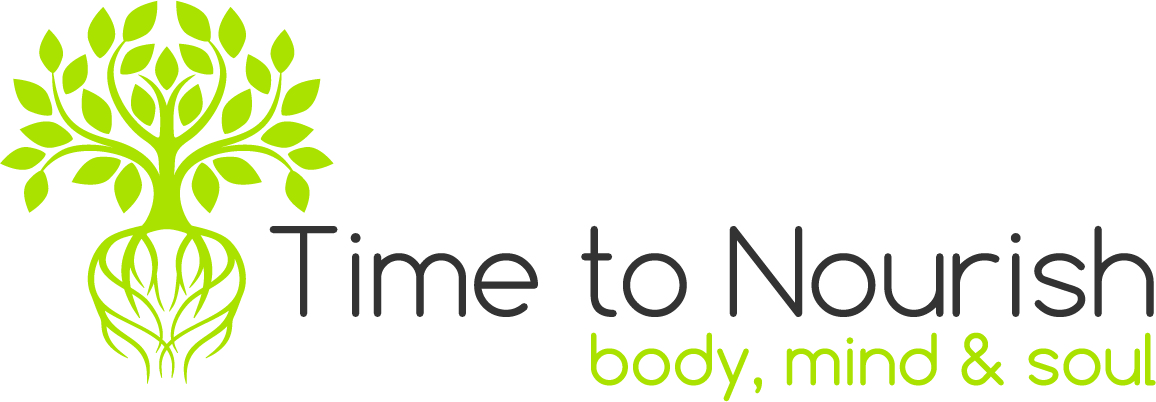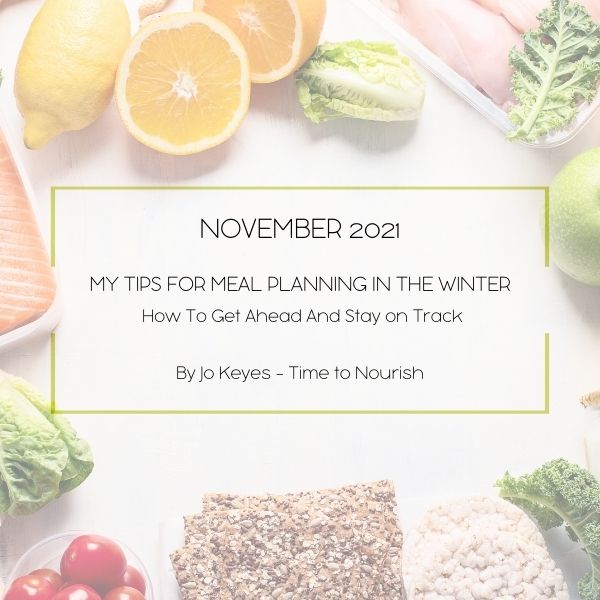As the winter and colder weather kicks in here in the UK I find myself needing to change my eating choices from salads and cold breakfasts to warmer more comforting meals. I also find that this requires a little bit more thinking as I can’t just open the fridge and throw cold stuff on a plate as I often do in the summer months. Planning and preparing ahead is more important for the following reasons:
- Helps to keep me on track
- Saves me time on a day-to-day basis
- Saves me money as less waste
- Optimises left-overs saving more time and money
- It allows me to think more seasonally about what I’m eating
However, it is important not to get bogged down in the process and fall into the trap of trawling for new recipes and then not actually planning anything! What works for me may not work for you, there is no right and wrong way, it’s finding what works best for you. I hope these tips help you…
1. START WITH WHAT YOU HAVE
Create a list of recipes that you already know and are comfortable making. Include family favourites and get the family involved by asking them to contribute. Dig out those recipes you have been meaning to try but not got around to yet and pick up a couple of recipe cards when you see them in the supermarket, but only one or two or you may become overwhelmed.
Carry out a larder, freezer and fridge audit to see what you have that needs using up as this can inspire your meal choices. Check if there are any meals ready to go in the freezer and add them to next week’s meal plan – that’s a night you don’t have to cook already! Delving into the cupboards to see what staples are running low and need replacing is a good idea too.
2. USE A SYSTEM THAT WORKS FOR YOU
Finding a system that works for you – for me, it is still the pen and paper method in my daily planner. Alternatively, a chalk/whiteboard in the kitchen that everyone can see may be better. But for the more digitalised a spreadsheet or google calendar may work better.
Once the meals have been decided, create a shopping list and stick to it!! This will avoid naughties getting into the trolley and also ensure that you have all the ingredients you need when making your dishes. I prefer a weekly online shop and then top up when I need it at the local supermarket. But a more regular in-person shop may work better for you.
Don’t forget to stock up on healthy store cupboard staples which will make creating dishes easier and the shopping list shorter each week.
For example:
- Oils – coconut, olive, avocado, ghee
- Tomato puree
- Tamari (gluten free soy sauce)
- Apple cider and balsamic vinegar
- Tinned beans and pulses e.g. chickpeas, kidney beans, black beans, cannellini beans, lentils etc.
- Cans of coconut milk and chopped tomatoes
- Frozen fruit & veg
- Whole grains – e.g. oats, brown rice, quinoa
- Seeds & Nuts e.g. chia, flax, pumpkin, sunflower, almonds, cashews, walnuts, etc.
- Gluten free flour
- Gluten free pasta & noodles made from buckwheat, brown rice, lentil or pea flour
- Herbs and spices
3. HAVE A STRATEGY FOR PLANNING EACH MEAL
Plan breakfasts first as they are the easiest. Don’t choose something different every day, just choose 2-3 different dishes and alternate them throughout the week. Try to ensure that some days breakfast is savoury and not always sweet. I find choosing make-ahead or quick breakfasts during the week works best and then I can be more adventurous at the weekend when there is more time.
With a bit of planning lunch can be leftovers from dinner the night before so it cuts back on prep and thinking time.
Choosing the main meal of the day is usually where the planning is most important. Unless you have specific dietary requirements focus on having a variety of meat, fish and veg dishes each week as it helps you choose dishes and will ensure nutrient dense variety. Always try to cook more than you need so you have leftovers for lunch the next day and start to stock up the freezer. (Don’t forget to portion, label and date dishes you put in the freezer – you will never remember!!)
To guide your choices maybe have ‘theme nights’ each week or bi-weekly e.g. Monday fish night, Tuesday soup or stew night, Wednesday slow cooker or instant pot, Thursday Omelettes or jackets, Friday Curry, Saturday Mexican, Sunday roast etc.
Maybe at the weekend, or when you know you have time, choose new recipes to try. No more than once a week and then you can build up your repertoire over time
Don’t neglect planning and making snacks at the beginning of the week as this is often where people slip up on a healthy eating plan. Don’t make more than you need unless they can be frozen as you may be tempted to eat them all!
Here are some ideas:
- Chopped veg and a dip
- Homemade protein bar
- Fruit and nut butter
- Trail mix
- Balanced smoothie/shake
- Bliss balls
- Healthy muffin/biscuit/cracker
- Yoghurt and fruit
4. PREP LIKE A BOSS
Schedule in prep time. It does not take as long as you might think and saves so much time, stress and headspace during the week. Consider doing the following while making the Sunday dinner (which is what I try to do…)
- Wash and chop veg ready for snacks
- Roast veg – ready for savoury breakfast
- Cook meats – ready to pimp soups or lunch boxes
- Make dips ready for snacks
- Make bliss balls or sweet treats
- Cook components of meals e.g. a sauce or pesto to use on pasta or noodles
5. REST & REPEAT!!!
For maximum benefit you need to repeat this process. It will get easier and you will soon see and feel the benefits. If you are staying on track with healthy meals then you will have more energy, sleep better, improved mood and vitality. With a solid meal planning routine, you will reduce your stress levels and find you have more time on your hands. Win-Win I say!



